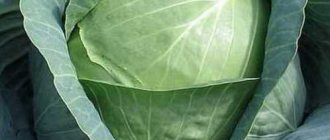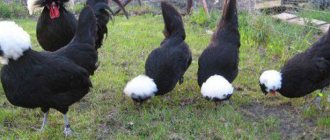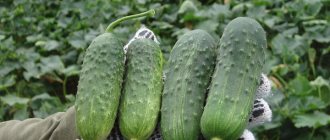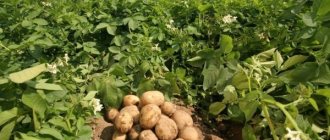Parel f1 cabbage is considered to be a hybrid variety of white cabbage that was developed by a Dutch seed organization. In 1990, the variety was included in the State Register. Parel f1 gained popularity due to the fact that it can be grown not only at home, but also used for large-scale production. At the same time, you can get high yields even if the planting is thickened. Recommended for cultivation in Russian regions: Central, Central Black Earth, Ural, Eastern Siberia, Far East, Volga-Vyatka, Western Siberia and North Caucasus.
History of variety selection
Working on the creation of this cabbage hybrid, breeders from the Netherlands set out to obtain a vegetable that would ripen as quickly as possible. As a result, they managed to obtain ultra-early ripening cabbage, which at the same time had an excellent presentation and excellent gastronomic qualities. The hybrid quickly gained recognition in Europe and has been successfully grown in Russia for over 20 years . Parel F1 cabbage is cultivated with equal success both in small gardens and on extensive plantations of large agricultural productions. Its ability to grow with equal success both in the open air and in greenhouses has provided it with a very wide distribution area.
Time frame for planting seedlings
There is no need to put in a lot of effort to grow Parel. However, there are certain rules that must be followed. Cabbage is planted using two methods - seedlings or non-seedlings. To grow high-quality vegetables, it is necessary to organize proper care of the crop and control the growth process. The beds are prepared in advance, dug up in the fall, before the cold sets in.
If necessary, fertilizer compounds can be added to the soil.
Cabbage is sowed in mid-March, no later. The seeds are pre-germinated. To do this, they are wrapped in a wet cloth and left warm for several days.
For a crop to grow well, certain conditions must be provided:
- sufficient lighting;
- temperature regime of twenty to twenty-two degrees. At night it is allowed to be reduced exactly by half;
- The room should be ventilated regularly, but the air in it should not be too cold;
- Once a week, the plants are watered with a manganese solution.
Two weeks after the sprouts appear, the seedlings can be transplanted into separate containers. Here you need to pay attention to the appearance of the plants in order to understand what fertilizers should be applied. If the foliage is pale green, it is necessary to add nitrogen-containing compounds.
This is interesting: What to feed ducklings at home
When the seedling period comes to an end, potassium-phosphorus compounds are added. It is mandatory to begin hardening off the seedlings two weeks before transplanting them into the beds.
Seedlings that are one and a half to two months old are suitable for planting. When transplanting, weakened shoots must be removed immediately. Strong and healthy plants that have managed to form at least five leaves are suitable for planting. If the root system is too long, it can be shortened a little. In this case, the sprout will take root better and will not lose moisture.
Description and characteristics
This cabbage hybrid quickly forms round compact forks, the weight of which ranges between 900 g and 1.7 kg. Cabbage leaves are colored juicy green and covered with a waxy coating. A short stump inside the head of cabbage minimizes the amount of waste when processing cabbage. The vegetable has a great taste. In addition, when cut, cabbage forks exude a very pleasant and lasting aroma. The hybrid is characterized by resistance to adverse weather conditions and is able to withstand spring frosts.
Ripening in 53-55 days, the vegetable is capable of producing 1 square meter. m up to 6 kg forks.
Colored
The most common type of cabbage after white cabbage. Cauliflower, like Romanesco, which belongs to this group, has become very popular recently. Coloring ranges from boiling white to purple. Light green colored heads are also found.
Unlike other species, cauliflower is very demanding on growing conditions.
If there are changes in the irrigation regime or temperature fluctuations, it will not be possible to obtain a full harvest. To obtain good results, cauliflower is grown through seedlings.
Cauliflower varieties, description:
Express
Express
- Precocious.
- The rosette is large in size, up to half a kilogram.
- The inflorescence is white, slightly raised on the stalk.
- The value of the variety lies in its high degree of resistance to various diseases.
Cheddar F1
Cheddar F1
- Mid-early variety.
- The head is rich yellow in color due to its carotene content.
- Weight from 1 to 2 kg.
- Romanesco Emerald Cup
- Heads weighing from 300 to 500 g.
Cucumbers: description of 29 varieties, main characteristics and gardener reviews about them | (Photo & Video)
Pros and cons of the variety
- While not being an ideal cabbage variety, which simply does not exist in nature, the Parel F1 hybrid, nevertheless, approaches optimal conditions thanks to:
- ultra-precocity;
- high taste qualities;
- exemplary presentation of heads of cabbage;
- excellent transportability;
- good yield;
- the presence of immunity to most cabbage diseases;
- friendly maturation of forks;
- their resistance to cracking within 2 weeks after ripening;
- good germination of seed material;
- color tolerance;
- resistance to adverse weather conditions;
- short internal and external stumps.
- The main disadvantage of the cabbage hybrid under discussion is its unsuitability for long-term storage and fermentation. In addition, it is regrettable:
- the need to purchase seeds annually due to the fact that this vegetable is a hybrid;
- small size of heads of cabbage, which negatively affects yield indicators.
Did you know? The great importance and popularity of this vegetable for humans is evidenced by a well-known story for children, according to which they were found precisely in cabbage.
Diseases and their prevention
The hybrid has good resistance to diseases and pests, but it would still be a good idea to monitor its condition. At the first stage of growth, cabbage is threatened by leaf beetles, cruciferous flea beetles, moths and cabbage flies. Tobacco dust and wood ash effectively help fight them. In subsequent growth phases, the crop must be protected from cabbage whites and aphids.
Read also: Rumba grapes: variety description, cultivation, care and reviews
Infusions of tomato tops, wormwood, garlic and dandelion will help against insects. If there is a clear threat, systemic insecticides can be used, but in this case harvesting should begin no earlier than after a couple of weeks.
Optimal planting dates
Since cabbage can be planted either by directly sowing seeds into the soil or by seedlings, the timing of planting the vegetable varies significantly. The timing of sowing seed into the ground completely depends on the climatic characteristics of a particular area. In this case, vegetable growers rely on the rule according to which seeds can be sown in the ground when the night temperature does not stably drop below +8°C. Sowing seeds for seedlings, which does not depend on weather influences, is usually carried out in mid-March. And when more than 5 leaves form on the seedlings (usually this happens at the end of April), the seedlings are planted in an open-air garden.
Planting and care
Two methods are used to grow Atria cabbage: sowing in the ground and planting seedlings. Considering the ripening time of this variety, it is recommended that in the southern regions immediately sow the seeds in a summer cottage, and gardeners in the northern regions should give preference to planting seedlings.
Growing seedlings
In order not to waste time and get good Atria cabbage seedlings, it is better to first make sure that the seeds are germinated. First, the seed material is hardened: kept for 10-15 minutes in hot water, and then immersed in cold water for a minute. At night, the seed material is soaked in a solution of nitroammophosphate and washed in the morning. To ensure the quality of the planting material, it is wrapped in a wet cloth and placed in a warm place for five days. The fabric must not be allowed to dry out, so the fabric is periodically moistened. On the fifth day, you can check the germination of seeds. Unsprouted grains are simply thrown away.
Important! Street soil must be disinfected. For this, a special composition or solution of potassium permanganate is used.
This preventive measure will protect the sprouts from infections and diseases.
For this, a special composition or solution of potassium permanganate is used. Such a preventive measure will protect the sprouts from infections and diseases.
Growing seedlings is carried out in several stages.
- A fertile soil mixture is prepared. To do this, mix soil, peat, and clean sand. To provide seedlings with nutrition, it is also recommended to add superphosphate and ash.
- Holes (one centimeter deep) are marked on the surface of the moistened soil at a distance of a centimeter from each other.
- Sprouted grains are placed in the holes, covered with earth and pressed lightly. The box can be covered with film and stored in a warm room (with a temperature not lower than +18˚ C).
- Seeds usually germinate in 4-5 days. At this stage of development, the optimal temperature for the growth of seedlings of the Atria variety is considered to be +7˚ C. If this requirement is not observed and the seedlings are left warm, they may die.
- As soon as several leaves appear on the Atria seedlings (in about 9-10 days), you can begin the stage of planting the sprouts in separate pots. A universal option for separate containers is a peat pot.
- The dishes are filled with soil containing mineral fertilizers. To avoid damaging the seedlings when replanting, it is advisable to use a stick or a teaspoon.
- In separate containers, Atria cabbage grows for 19-24 days. Ten days after transplantation, they begin to harden the seedlings. For this purpose, containers are taken outside for a short time. Every day the period of stay of seedlings on the street increases. Immediately before transplanting cabbage into open ground, it should be outside all day.
The most suitable period for planting seedlings in a garden plot is May 10-20. There is no longer a threat of night frosts, and the soil warms up to a suitable temperature.
Advice! It is better to plant Atria seedlings in a greenhouse if you want to get an early harvest or if cabbage is grown in a cold region.
Watering cabbage
For confident growth and high-quality formation of the Atria head, it is recommended to properly water the crop. Cabbage is a moisture-loving plant. Therefore, for some time after planting, the seedlings are watered every two to three days.
After 12-14 days, you can reduce the frequency to once a week.
The Atria variety especially needs regular watering at the head formation stage. In order for the plant to grow normally, it is advisable to use warm water for watering, not lower than +18˚ C.
An important procedure for caring for Atria cabbage is constant loosening of the soil to ensure aeration of the roots.
Advice! It is better to loosen the soil and simultaneously remove weeds before and after watering.
Soil fertilization
To obtain a full and good harvest, Atria cabbage is regularly fertilized. Recommended soil fertilization schedule:
- 20 days after transplanting the seedlings. The Effekton solution is used;
- ten days after the first application of fertilizing. Fertilizer "Kemir" is used;
- June - a mixture of mineral fertilizers (superphosphate and potassium sulfate) is applied;
- August - (about three weeks before harvesting Atria, a solution of nitrophoska is added).
To prevent nutrient mixtures from damaging the cabbage root system, fertilizers are applied to wet soil (it is advisable to choose a cloudy day).
Growing the variety
Growing this cabbage hybrid does not present any great difficulties, but it requires care and adherence to the sequence of necessary actions.
Seed preparation
Seeds sown in mid-March require preliminary preparation in the form of disinfection and germination. For disinfection, seed material is placed in a warm pink solution of potassium permanganate and kept in it for 15 minutes. To germinate seeds, they are wrapped in damp cloth and kept in a warm place for several days.
Growing seedlings
To plant seeds, adequately prepared soil is required. You can purchase a ready-made substrate at specialized retail outlets, or you can prepare it yourself by combining in equal proportions a mixture of:
- turf land;
- humus;
- compost;
- sand.
It is useful to enrich the resulting mixture with wood ash in the amount of 200 g per bucket of substrate, which will not only provide the plant with additional mineral fertilizers, but also protect it from pests and diseases. The substrate you created with your own hands should be disinfected by watering it with a solution of potassium permanganate. The planting mixture is placed in containers, which can be:
- low wooden boxes;
- special plastic containers;
- peat pots;
- plastic cups;
- cardboard cups.
The substrate placed in the container is moistened and depressions of 1 cm are made in it. Their number depends on the surface area of the soil, taking into account the need to plant seeds no closer than 3 cm from each other. The sown seeds are covered with a thin layer of substrate and moistened using a sprayer with warm and settled water. Then the containers are covered with glass or transparent film to create a greenhouse effect and placed in a place at room temperature. After germination, the coating is removed from the container, and the containers themselves are placed in a well-lit and cool place with a temperature no higher than +15°C.
Important! Peat washers, in which pressed peat is combined with the necessary nutritional components, are very popular among vegetable growers.
It is necessary to water the sprouts moderately, as the soil surface dries, once every three days, avoiding waterlogging. As two true leaves form, seedlings grown in boxes and containers are planted in separate containers with similar soil. A week after picking, the seedlings are fed with universal fertilizers. At the same time, all plants begin to harden, taking them out into the fresh air every day and gradually increasing the time they spend under the open sky.
Preparing the site and soil for planting
For successful cabbage growth and high yields, it is very important to choose the right site for cabbage beds. Vegetable predecessors that previously grew in this place are of great importance. Cabbage plantings feel best in areas after:
- potatoes;
- Luke;
- carrots;
- cucumbers;
- beans;
- peas
And very undesirable precursors for cabbage are:
- radish;
- turnip;
- tomatoes;
- beet.
Cabbage beds should be located in open areas, avoiding the slightest shading.
A couple of handfuls of wood ash are poured into holes dug in soil dug up in the fall along with organic fertilizers according to a 50x30 cm pattern. If fertilizers were not added to the soil in the fall, then 5 g of ammonium nitrate or urea and 20 g of superphosphate are poured into each hole.
Important! You should absolutely not grow cabbage in the same place for several seasons in a row.
Transplanting seedlings into the ground
An early cabbage variety, such as the hybrid Parel F1, is planted in the form of seedlings in the ground when it has at least 5 leaves. It is best to plant in the morning or in cloudy weather. The seedlings are buried in holes charged with fertilizers and well watered up to the 3rd cotyledon leaf, covered with soil and compacted well to avoid the formation of voids near the root system. After which, the soil is watered again and sprinkled with dry soil.
Characteristics of cabbage variety Parel f1
The variety of cabbage varieties allows you to choose seeds, taking into account growing conditions and taste characteristics. Among the early ripening hybrids, Parel cabbage stands out.
Characteristics of cabbage variety Parel f1
Characteristics of the variety
Over a period of cultivation of more than 20 years, it has shown itself to be a record holder for the rapid formation of a commercial harvest.
Description of Parel variety:
- ultra-early ripening;
- high resistance to frost;
- high resistance to cracking;
- high productivity;
- excellent taste;
- universal purpose.
Parel is suitable for both commercial production and cultivation in a summer cottage. From the moment the seedlings are planted in the garden until the harvest, an average of 55-60 days pass.
Productivity varies depending on growing conditions. It ranges from 150 c/ha to 450 c/ha. Summer residents note that thickened planting does not affect the quantity and quality of the harvest.
Description of the head of cabbage
White cabbage Parel f1 forms small round heads weighing from 800 g to 1.5 kg. The rosette of leaves is raised. The leaves are light green in color and have smooth edges. There is a small waxy coating on the surface, which can be easily removed when touched by hand.
In a state of biological maturity, they are well stored in garden beds without loss of taste and marketability for up to 2 weeks. Ripening occurs evenly. This is convenient for farms that sell early varieties of cabbage.
Application of the vegetable
Parel is often used in stews, in baby food and in dieting. When cooked, the sheets quickly become ready and are well crushed in a blender into puree.
Growing
To get a rich harvest, follow some growing rules:
- Seeds for seedlings are sown at the end of March at home and at the beginning of May in an open garden bed. When grown through seedlings in open ground, the bushes are planted at the age of 4 weeks. This is the period of late April-early May. In regions with cold summers, these dates are shifted by 1-2 weeks.
- Early varieties are grown in greenhouses for harvest in late May and early summer. The technology is the same as when growing in an open garden. Seeds are sown for seedlings in early March, then they are planted in the phase of 4 true leaves and planted in a permanent place.
Care for your plants properly
The description of Parel cabbage shows that this plant is not demanding in terms of care and growing conditions, but general recommendations should be followed. These include:
- watering;
- loosening the soil and removing weeds;
- feeding;
- treatments against diseases and pests.
Watering
Cabbage likes to grow in well-moistened soils. If the region is characterized by long periods of drought, watering is carried out 2-3 times a week (if possible, every day). Watering is done in the evening with settled water at the root. In other cases, it is enough to water the bushes once a week or as needed.
Loosening
Loosening the soil is carried out infrequently so as not to damage the leaf rosette. In the first months, the row spacing is loosened once every 2 weeks. When the rosette grows and the head begins to form, the weeds are removed by hand. Since cabbage has a wide rosette, weeds grow poorly.
Top dressing
Nitrogen fertilizing is applied sparingly so as not to interrupt the head setting phase. In total, 1-2 nitrogen fertilizing is sufficient per season. The exception is when the leaves lose color and become pale: this is a signal of nitrogen deficiency. Then another additional feeding is carried out.
Diseases
The vegetable, due to its F1 category hybridity, is resistant to diseases and pests, but if not properly cared for, there is a risk of damage to the plant. The following changes in the plant are cause for concern:
- If the stem gets wet or rots, root rot develops.
- If growths or swellings appear on the leaves, this is a keel.
- Peronosporosis is characterized by spots and a strong coating on the leaves.
To destroy the infection, the planting is treated with fungicides. If root rot occurs, stop watering for a while. If the plant grows in a greenhouse, ventilate more often and reduce humidity.
Pests
When fighting insects and pests, they focus on the seasonality of their reproduction.
Conventionally, there are 3 phases when cabbage is susceptible to pests:
- When growing seedlings, leaves are eaten by leaf beetles, cruciferous flea beetles and cabbage flies.
- During the formation of the ovary, cabbage whites are activated.
- Ripe heads of cabbage are eaten by cutworms and cabbage aphids.
When the first insects appear, you can use folk decoctions: ash or tobacco solution. If traditional methods do not help, they switch to chemicals (insecticides).
https://youtube.com/watch?v=kifRuv-GqyE
Features of caring for cabbage in open ground
Agrotechnical rules for caring for vegetables are as follows:
- watering;
- feeding with fertilizers;
- weeding and loosening the soil;
- prevention of fungal and bacterial diseases;
- protection from pests.
The frequency of watering depends on weather conditions in each specific case, but usually at least once a week. It is necessary to water the vegetable with settled warm water. After each watering or rain, the soil should be loosened to improve the oxygen supply to the cabbage root system. Loosening is usually combined with weeding. The early hybrid variety Parel F1, growing in open ground, is fed with fertilizers twice a season. The first time feeding is carried out half a month after planting in open ground. During this period, the plant needs nitrogen most, the need for which is satisfied with the help of:
- bird droppings diluted in water (in a ratio of 1:15);
- ammonium nitrate;
- nettle infusion.
After the formation of the ovary, cabbage has a greater need for phosphorus and potassium, which is supplied to the soil by adding superphosphate and potassium sulfate. To protect the plant from attack by pests, it is useful to dust it with tobacco dust or wood ash.
Reviews from summer residents
Reviews about Parel F1 cabbage are contradictory. Experienced gardeners note high taste, immunity, productivity, but a tendency to cracking and a short shelf life.
Lyubov, Izhevsk: “Several years ago I read reviews and purchased Parel F1 seeds in the original Dutch-made packaging, since then, of all the early varieties of cabbage, I recognize only this one. I sow the seeds for the first time in the greenhouse directly into the ground. The seedlings grow strong, and the harvest is early - in the second half of June. The second time I sow the seeds in open ground in May - this keeps the cabbage happy until the fall. Heads of cabbage up to 2.5 kg grow on the site. They are all smooth, dense, and the stalk is very small. The only negative is that it often cracks during aging. It doesn't last long - no more than 2 months. Incredibly delicious fresh.”
Nikolay, Moscow: “ I have long dreamed of a summer cottage. And recently I acquired a small garden area. He immediately built a greenhouse. I saw Parel F1 cabbage seeds in the store and decided to try to grow them. The harvest exceeded all expectations - the cabbage is juicy, sweet, tasty and healthy. I didn’t treat the plants with anything and didn’t observe any diseases.”
This is interesting:
How to properly ferment cabbage heads.
What are the benefits of sauerkraut juice for the face and how to prepare various masks with it.
Harvest and storage
Parel heads ripen in June. The maturity of the forks is determined by their density and the characteristic shine of the outer leaves. A special feature of this hybrid variety is its ability to remain on the beds for 2 weeks after ripening and not crack. This is very convenient, for example, for summer residents who do not have the opportunity to monitor the degree of ripeness of vegetables every day. Remove the forks by cutting them off at the very surface of the soil. As already mentioned, the disadvantage of this cabbage hybrid is its unsuitability for long-term storage and fermentation.
This cabbage has to be consumed quite quickly.
The victorious march of the cabbage hybrid Parel F1 across the vast plantations of large agricultural producers and country and home garden beds is explained by both its extraordinary taste and the ultra-early ripening of heads of cabbage. The inability of the forks of this cabbage to be stored for a long time and their unsuitability for fermentation are compensated by the very tasty and aromatic vitamin salads with which this vegetable pleases already at the beginning of summer.
What is an F1 hybrid?
The Parel variety is purposefully bred for early harvest. During the short growing season, which is 52-56 days, large bright green heads of cabbage are formed. The average weight of one head of vegetable is 0.8 - 1.4 kg. And what is important, cabbage is distinguished by its massive, uniform ripening.
The hybrid is distinguished by compact round heads of dense structure, formed by large rosette leaves with a waxy coating. The edges of the leaves are smooth. The inner stalks are short or medium-sized, resulting in little waste during the cooking process. The taste of the vegetable fully satisfies the needs of a larger number of customers.
In cooking, Parel is used fresh for preparing salads, added to first and second courses, and also fermented for the winter. Hybrid F1 has increased immunity to diseases and pests. The variety rarely blooms and cracks. After ripening, cabbage can stand in the beds, maintaining its integrity, for about two weeks.
"Parel" is resistant to sudden changes in temperature and grows equally well both in greenhouse conditions and in open ground.
Parel cabbage has won the love of farmers due to its advantages. Among which:
- ultra-early maturation
- beautiful presentation
- transport resistance
- high yield
- uniform mass ripening
- immunity to diseases
- high seed germination
- crack resistance
In order for the body to receive the maximum amount of nutrients, it is recommended to eat the vegetable fresh.











